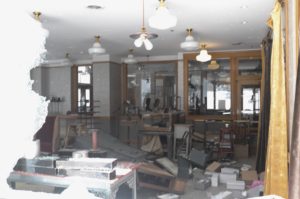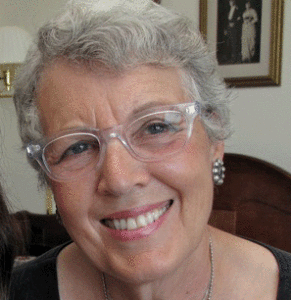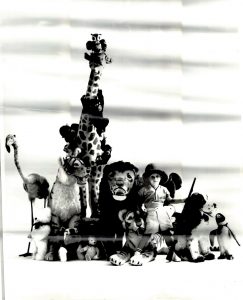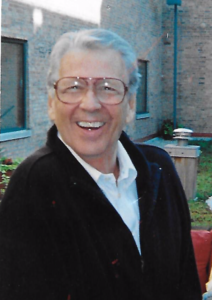Mondays with Mike: The spirit of Floradora lives!
June 29, 2020 • Comments • Posted in Mike Knezovich, politicsBack on June 1, I blogged about a week that included great kindness I experienced, as well as the mayhem of looting our neighborhood endured during the post-demonstration riots on the night of May 30th and morning of May 31st.
I’m happy to say that we have all endured, and although some windows remain boarded up, most of the businesses behind the boards are open.
Floradora, the little boutique where Beth does her shopping, and which I wrote about in June 1 blog, is not one of them. But according to its owner, there are plans to reopen.
We learned more about that awful night in an email Michael Blossom, the owner, sent to the shop’s customer email list. Some parts are heartbreaking:
I received an alert that our alarm was triggered at midnight, and given what was on the news, I knew what was happening. So I headed to the Monadnock Building, navigating around all the raised bridges, and ended up staying all night as it continued. The security guard convinced me not to enter the shops while looters were actually in there, but during quiet times I was able to rescue some of our computer equipment that had important data. But looters kept coming back all night, even into the early daylight hours. Most, it seemed, came for the free stuff, while others came just to damage things. Police were called but never came, and boardup services were all too busy, so we couldn’t do anything to stop it. The feeling of helplessly sitting there for hours as it was happening is one I’ll never forget.
(Note: During the looting, the drawbridges over the Chicago River were raised to prevent access to the downtown.)
Other parts of the email—like this closing to the message–were heartbreakingly beautiful:
So…where do we go from here? Florodora was getting ready to reopen its doors and launch its online store all at once, but now we can do neither. If Nationwide Insurance comes through, we’ll be back for sure, though I can’t say when. But what is Florodora anyway? It’s not the merchandise. I’ve always seen it as more of a community-based collaboration, between me, our staff, and our customers. Nothing about that can be looted, so we are all still here, and I thank you from the bottom of my heart for being a part of it.
Sent with love and hopes for peace,
Michael
If that doesn’t get you teared up, well, read this follow-up message. It thanks customers for their kindness, and their offers to set up GoFundMe pages for cleanup and reopening. Michael very appreciatively turns down those offers, explaining that he hoped that insurance would cover everything. And then, this invitation:
… for those who are willing, I’d like to redirect some of the goodwill and desire for healing toward a neighborhood where there is more need. Please join me, some of our crew past and present, and some of your fellow Florodora customers this Saturday, June 13th, 10am-1pm (meet 9:30), in Englewood for a “Florodora day” of volunteer service. We’ll be joining a neighborhood cleanup day organized by the Greater Englewood Chamber of Commerce. I am told that Aramark will be generously providing lunch for the volunteers afterward, and I am hopeful that NBC 5 will cover this in their ongoing profile of our recovery.
Englewood, for those of you who don’t live in the Chicago area, is the poster neighborhood for underserved and blighted poor Black neighborhoods. But the good people at the Chamber of Commerce give hope that it can come back, and Michael’s call to action demonstrated that maybe we can help.
And, Michael’s enormous kindness and grace provided a lot of his friends—including me—with inspiration and hope at a time when we needed it.



